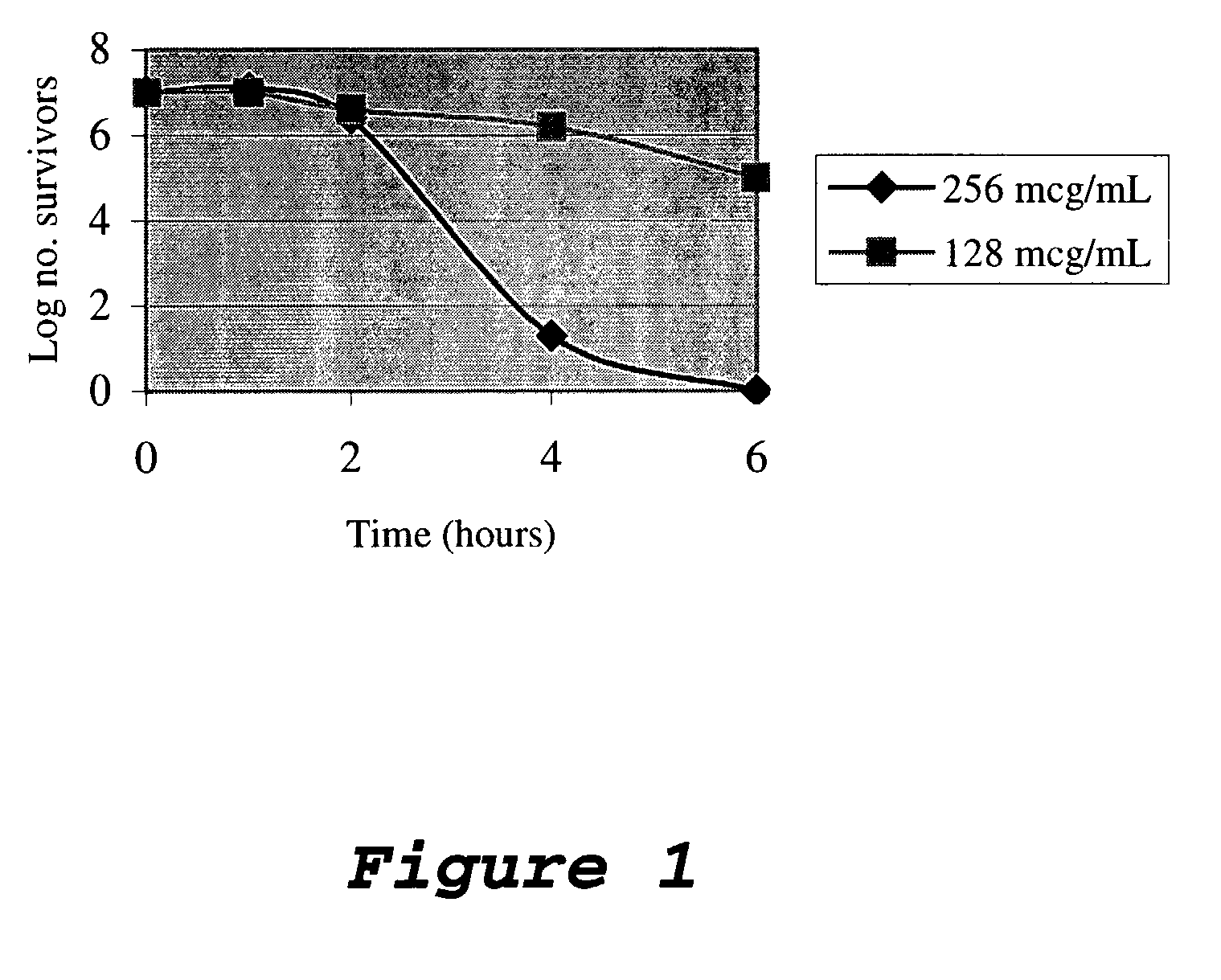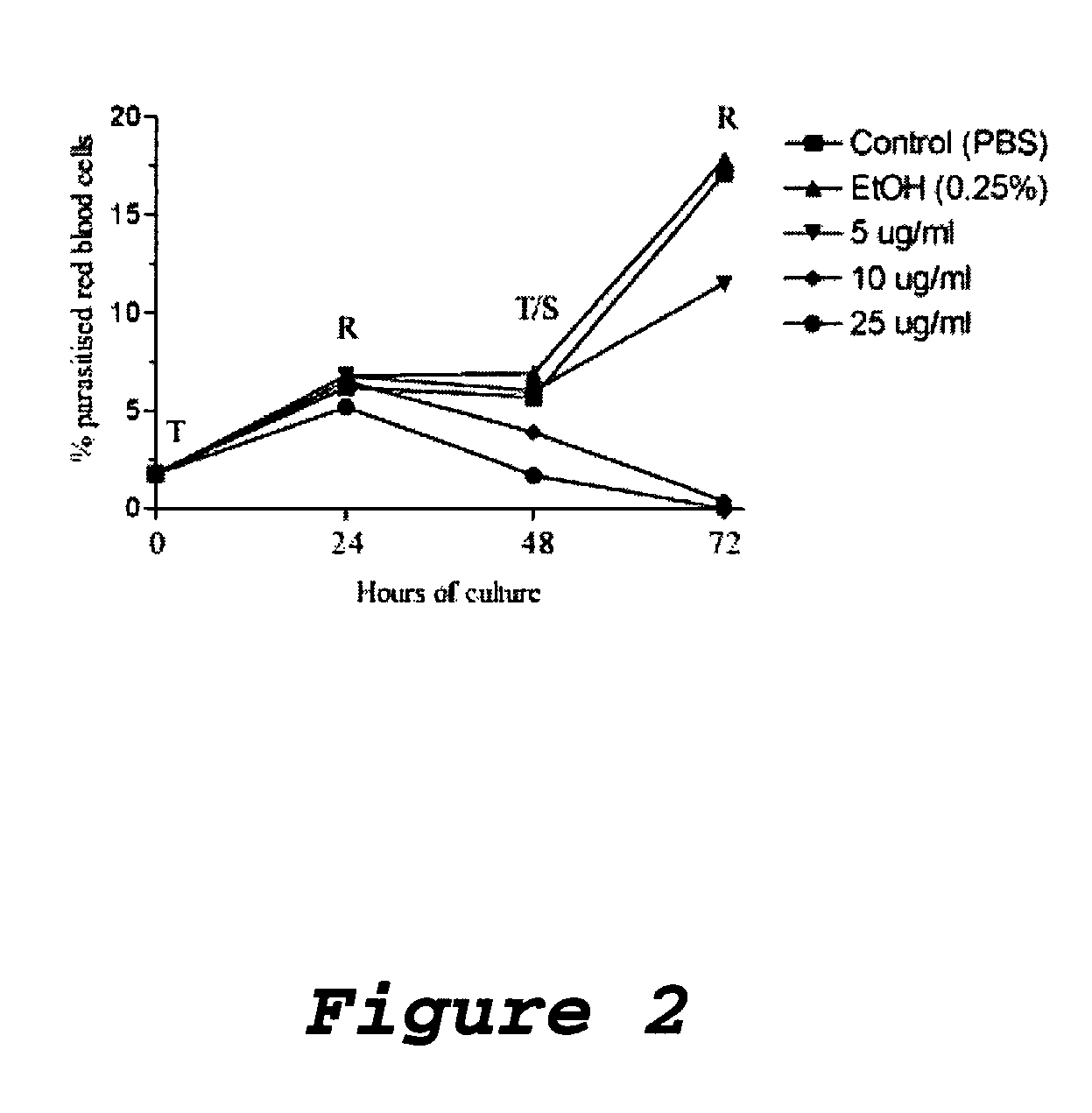Antimicrobial and radioprotective compounds
a radioprotective compound and antibacterial technology, applied in the direction of antibacterial agents, antinoxious agents, drug compositions, etc., can solve the problems of difficult infection control, narrow specificity of most antibiotics, and ineffective broad-spectrum antibacterial antibiotics against fungi and protozoa
- Summary
- Abstract
- Description
- Claims
- Application Information
AI Technical Summary
Benefits of technology
Problems solved by technology
Method used
Image
Examples
example 1
General Synthesis Methods
[0125]Benzdioxols are described in the literature (Perekalkin, 1982a). The synthesis of benzoimidazole and benzoxazole may also be carried out using standard condensation methods 1 and 2 (Perekalkin, 1966, 1982b) as shown below.
[0126]
[0127]in which X, Y, and R1 to R7 are as defined in formula I above.
[0128]In Method 2, equimolecular quantities of benzaldehyde and nitroalkane were mixed in an Erlenmayer flask and dissolved in equal volume of alcohol. Fresh distillated ethylenediamine was added to the obtained solution in catalytical quantities (usually 1:10 in relation to aldehyde and nitroalkane) and was left in the dark at room temperature for several days (from 3 up to 10 days). During this time compound crystallised. After the cooling up to about 0° C., the crystals were filtrated and washed with cold alcohol and then dried. When the yield is small, the mother liquids can be joined together and evaporated in rotary evaporator. After cooling the additiona...
example 2
Method for Preparing Compound (1) (3,4-methylenedioxy-β-methyl-β-nitrostyrene)
[0131]Compound (1) was prepared using Method 1 described in Example 1 above. The reaction scheme is shown below.
[0132]
[0133]A mixture of 9.8 g of tetranitromethane (1 mole) and 10 cm3 of acetone was cooled by ice and added dropwise to 8.1 g of distilled isosafrole (1 mole) and 4.8 g of pyridine (1.2 mole) dissolved in 20 cm3 of acetone. The very first drops caused darkening of the reaction mixture and the liquid turned non-transparent and murky red when the entire portion of tetranitromethane was added. The smell of tetranitromethane disappeared quickly and in approximately 2 hours the dark red solution which had turned transparent was poured into 100 cm3 of water in a stoppered bottle. The mixture was thoroughly shaken, covered with a layer of ether and a mixture of 6.7 cm3 of 33% solution of caustic potassium (1.03 mole) and 50 cm3 of water was added in small portions. The mixture was shaken after each a...
example 3
Alternative Method for Preparing Compound (1) (3,4-methylenedioxy-β-methyl-β-nitrostyrene)
[0134]Compound (1) was prepared using Method 2 described in Example 1 above. The reaction scheme is shown below.
[0135]
[0136]900 gm piperonal was dissolved in 1000 cc alcohol with constant shaking and 450 ml nitroethane was added slowly followed by 10 ml ethyldiamine. After 17 hrs stirring, the mixture was placed in the dark at room temperature for 5-7 days. The resulting yellow crystals were filtrated in a Buchner funnel until dried and then washed twice with 150 ml alcohol. This yielded 1200 gm of Compound (1) with melting point of 95° C. After further crystallization from ethanol, 1000 gm of light yellow crystals were obtained with a melting point of 98° C. (approx 80% yield).
[0137]Molecular formula C10H9NO4, molecular weight—207.05
[0138]
Physical and Chemical characteristicsForm of stateyellow crystalsSolubility profilesoluble in ethanol, acetone,benzene, methanol, acetonitrile,chloroform, DM...
PUM
| Property | Measurement | Unit |
|---|---|---|
| melting point | aaaaa | aaaaa |
| melting point | aaaaa | aaaaa |
| diameter | aaaaa | aaaaa |
Abstract
Description
Claims
Application Information
 Login to View More
Login to View More - R&D Engineer
- R&D Manager
- IP Professional
- Industry Leading Data Capabilities
- Powerful AI technology
- Patent DNA Extraction
Browse by: Latest US Patents, China's latest patents, Technical Efficacy Thesaurus, Application Domain, Technology Topic, Popular Technical Reports.
© 2024 PatSnap. All rights reserved.Legal|Privacy policy|Modern Slavery Act Transparency Statement|Sitemap|About US| Contact US: help@patsnap.com










